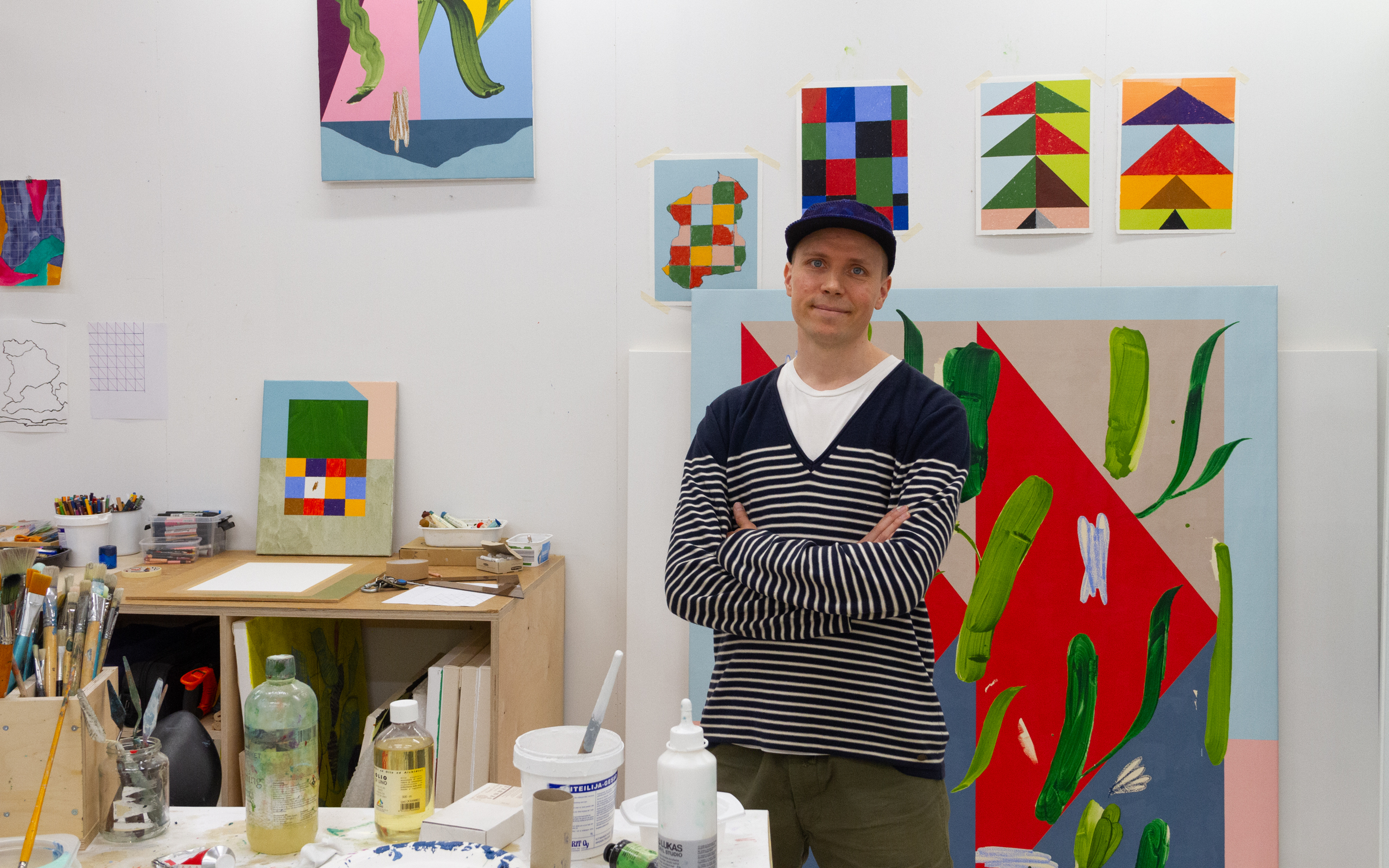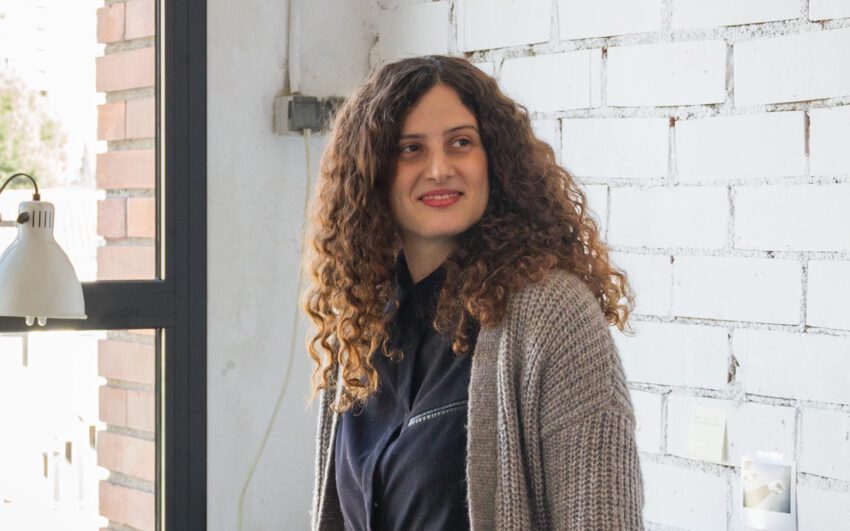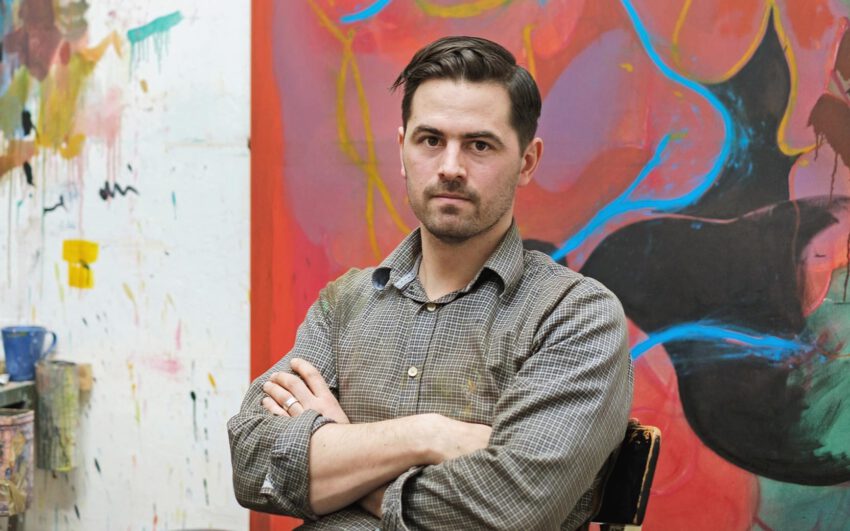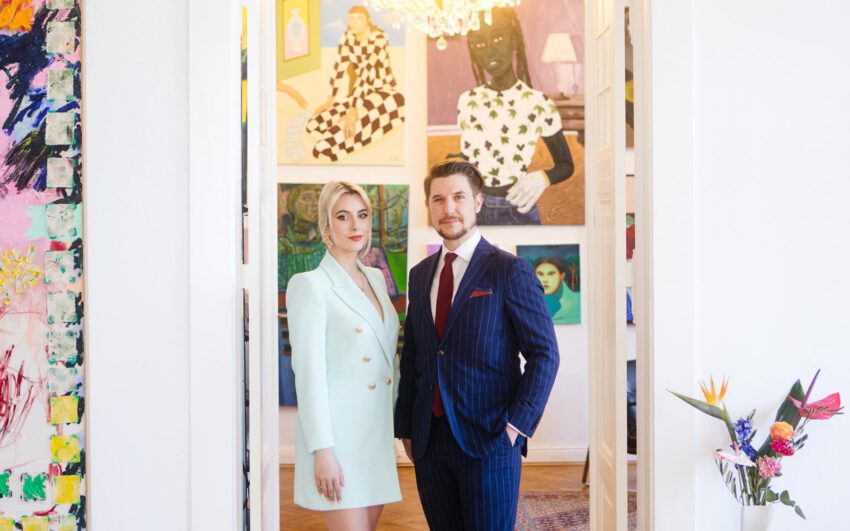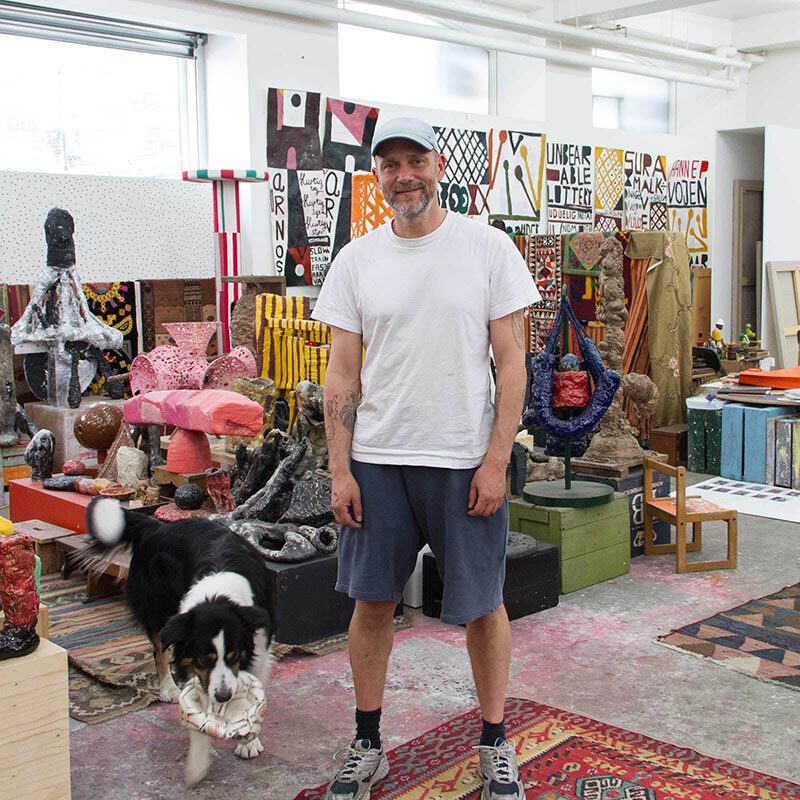The scene for contemporary art in Europe’s North is expanding and developing new dynamics as international collectors are watching the scene. With Nordic Notes we regularly cast the eye on the Nordic art and cultural scene, portraying its important actors.
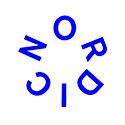
Ilari Hautamäki invites us to his vivid secret garden, which reflects on childhood summers spent in nature in Finland. His rhythmic brush strokes create organic foliage, which are then composed within frames and grids. The ‘perfect chaos’ that results from this combination is an example of his exploration into how the wildness of nature at the same time conforms to strict, functional, dimensional structure.
Ilari, I saw your most recent exhibition Flux in Helsinki in the winter of 2023. Compared to your earlier work, the works you presented there seemed somehow more monochrome?
Flux was the most melancholic show I’ve had for some time. I was working on it during the winter while it was dark, and I was really tired. I was just painting and decided to show a lot of white canvas and only two colors, it was reminiscent to me of a visual comparison with the compositions in Miles Davis’s blues. I had only six months to finish everything.
Six months sounds like a short stretch … Was it new to you to have such a brief amount of time to build an exhibition?
I was supposed to include some works from a previous exhibition but then I ended up doing everything from scratch, so I had to make some choices to get everything done. That’s why I created a new technique to finish pieces faster.
Can you describe the technique?
I started making everything in oil, which ended up being too slow an application, so I had to speed up the process. I had to plan a lot and do things backwards. I had to decide where I wanted to have foreground elements, the plant motifs, motives, before I made the background and so left some of the background unpainted in order to get the painting done in time. I prefer the slower approach to painting but sometimes it’s not possible to wait four months for a layer to dry.
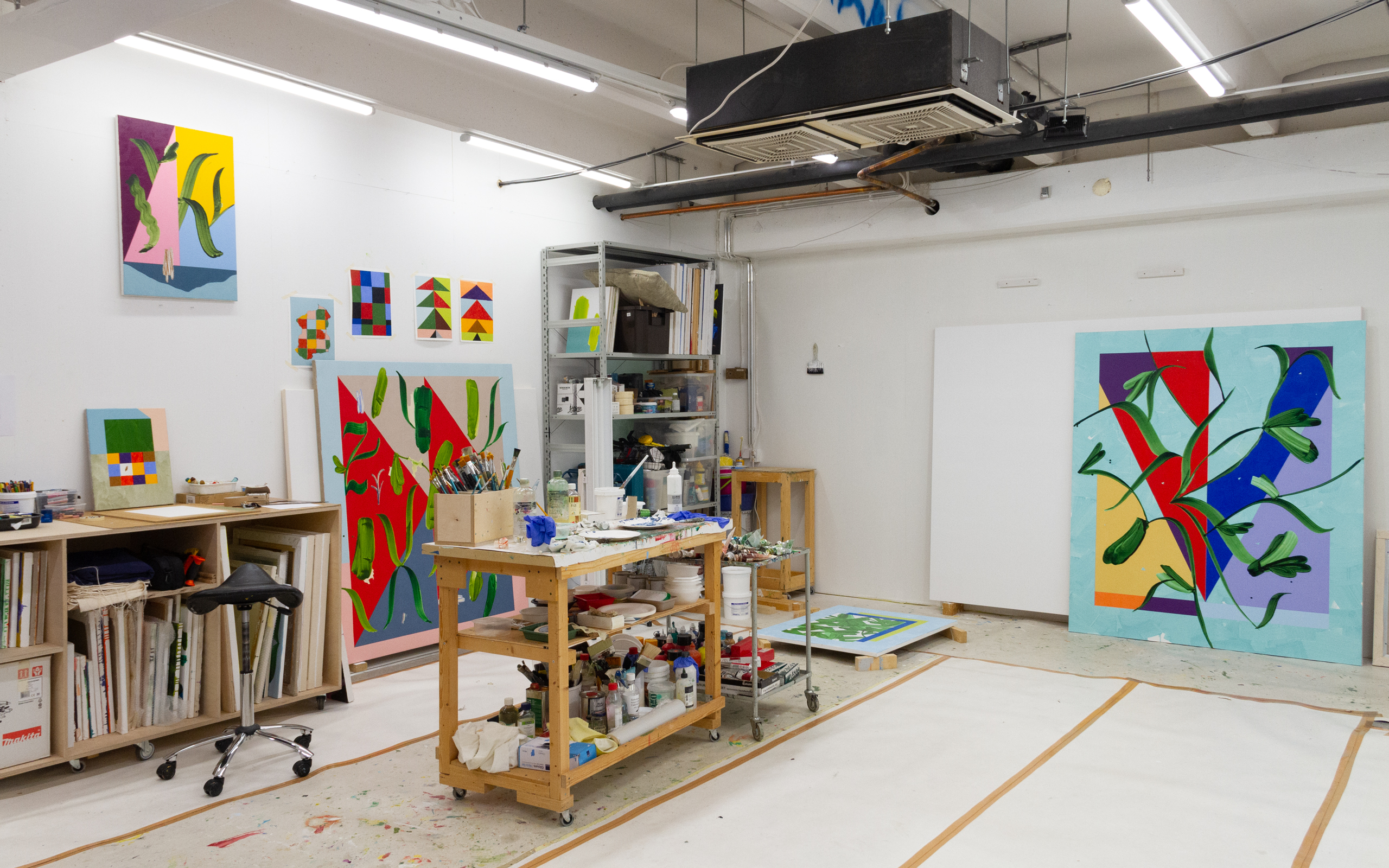
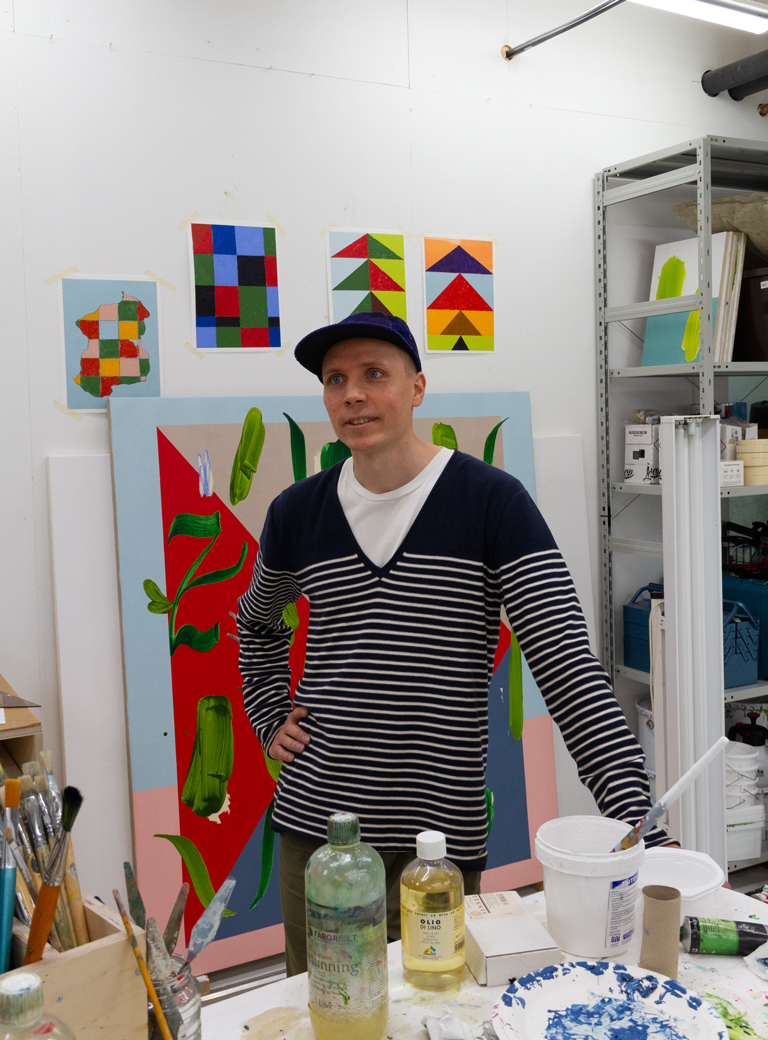
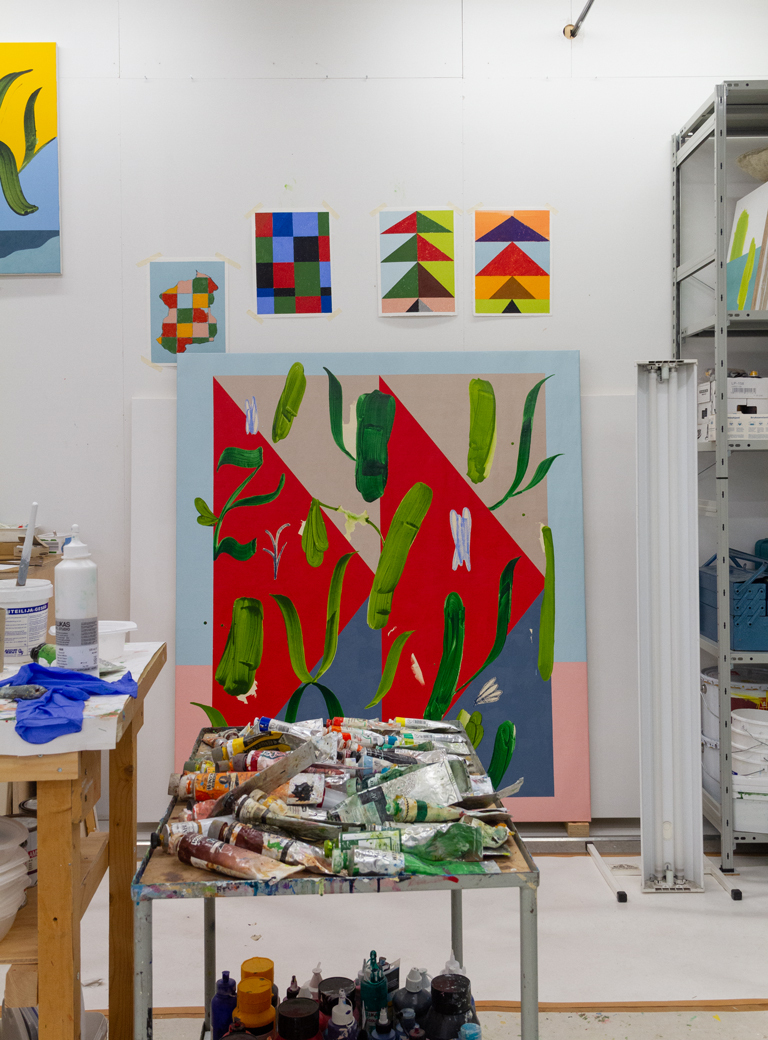
What does the name Flux tell us?
The name relates to movement and the constant change of the world surrounding us. Also, my art is constantly changing. The way I visualized this can be seen in the compositions: I took out frames, added layers and left a lot of canvas visible. There are very dense parts and highly saturated color contrasts over a cool wash of thinly painted background. For example: Flux (New Wave) is a brilliant example of this.
Despite the more stripped approach in Flux, the lead motif of your art – the predominantly green, wild nature – is very present. Are the newest works connected thematically to earlier works?
For the past six years, I’ve been exploring the combination of organic and built worlds. The organic plant matter is nature as I see it from my mind, it's my memory from being in nature. I was born and raised in Helsinki, and I've been living here all my life. In my childhood, we had a summer cottage. I loved being in nature. The plants form a collected memory of my feeling of nature, of how I wanted to be; uncontrollable and crazy. That’s why I like to get wild with the canvases. I have added another quality in me, this really controlled, organized person. As you can see my studio is pretty clean and this translates into the grids and the rectangular shapes in the works. Putting these two qualities together is an ongoing process.
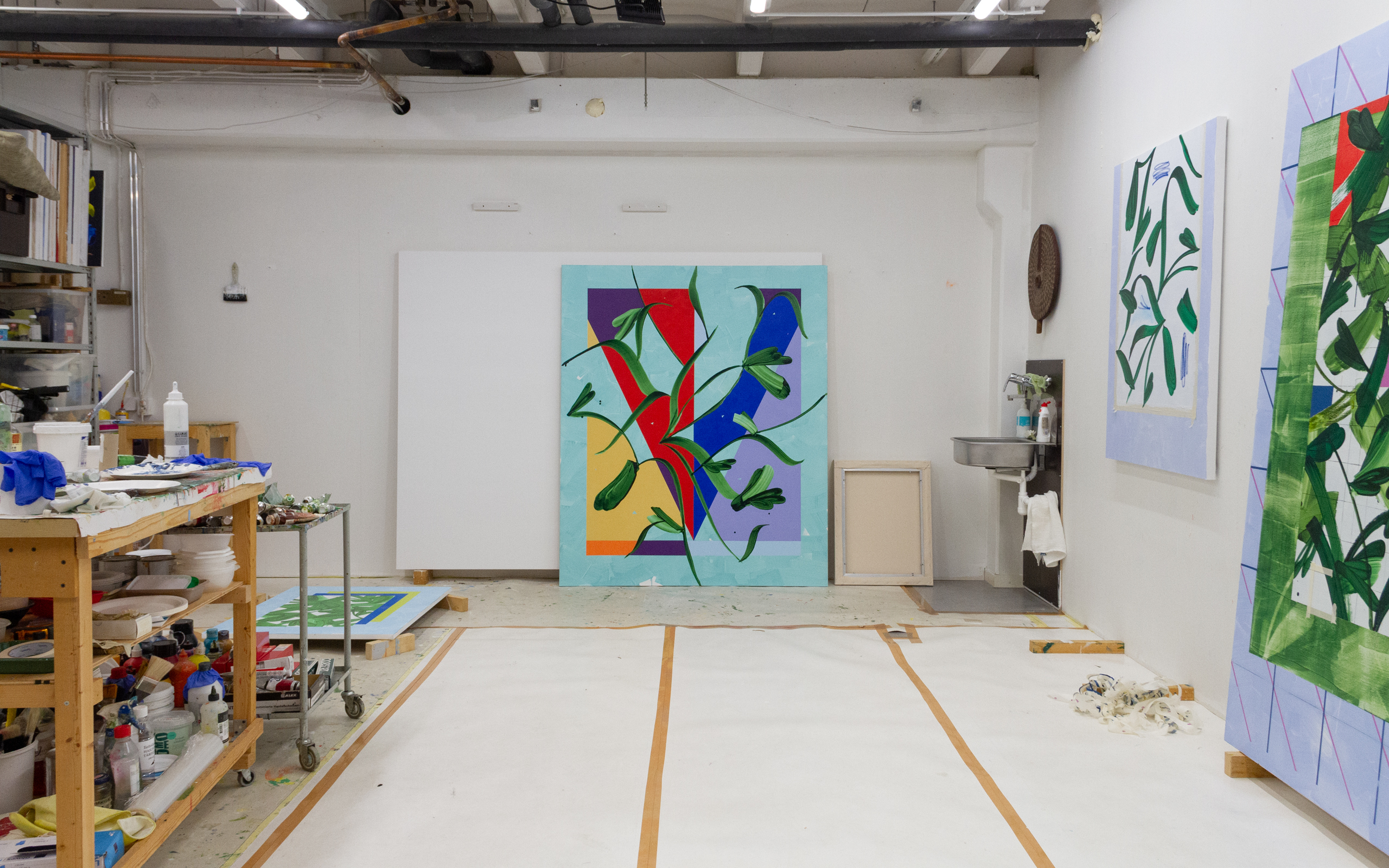
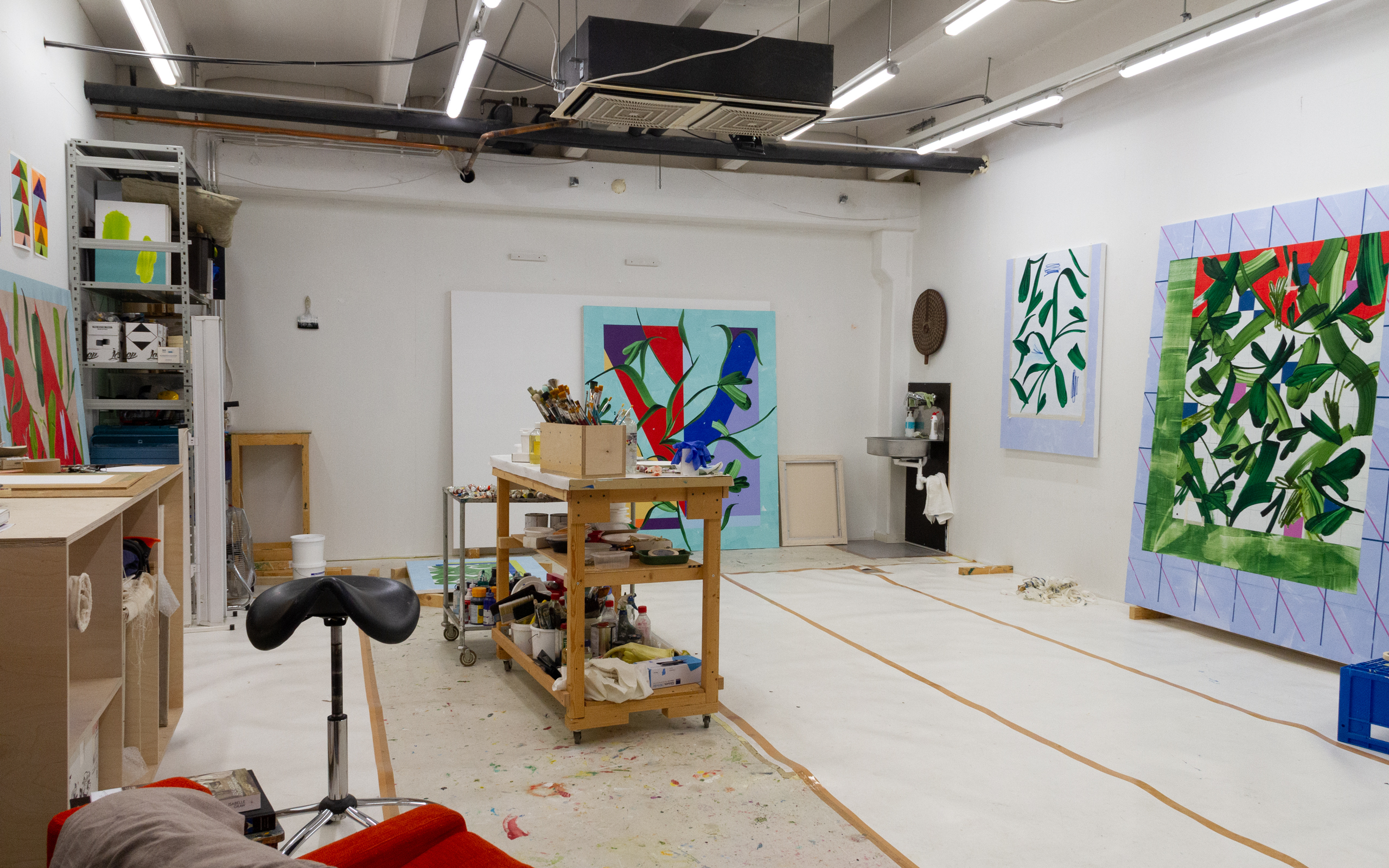
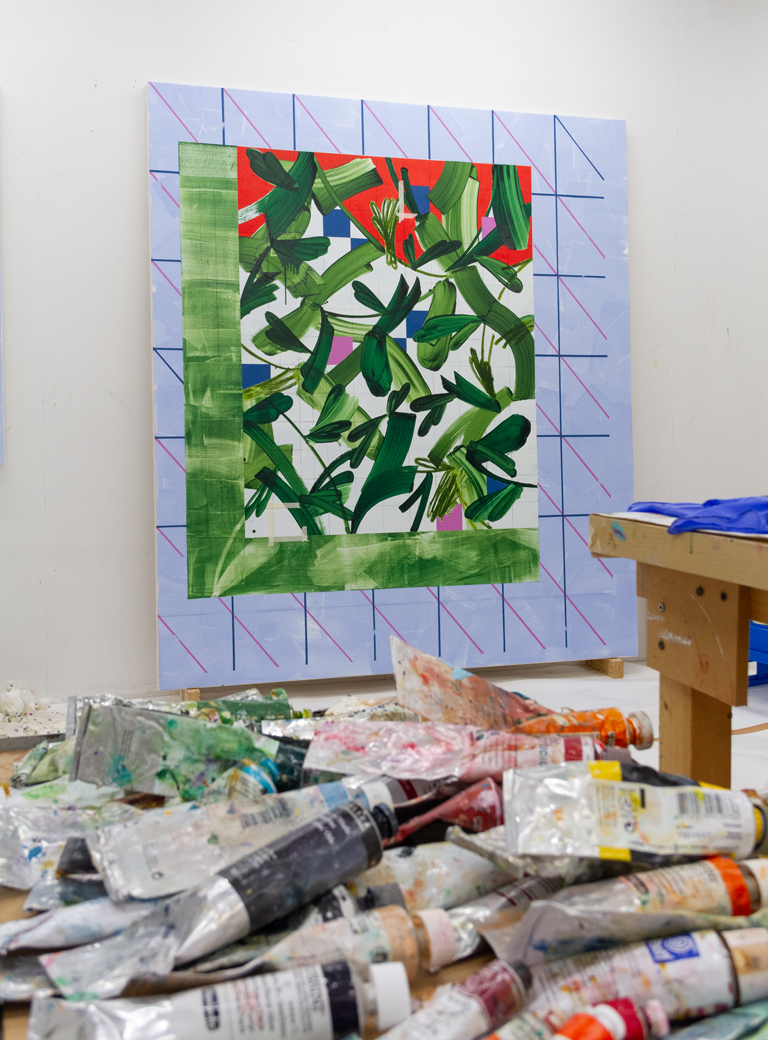
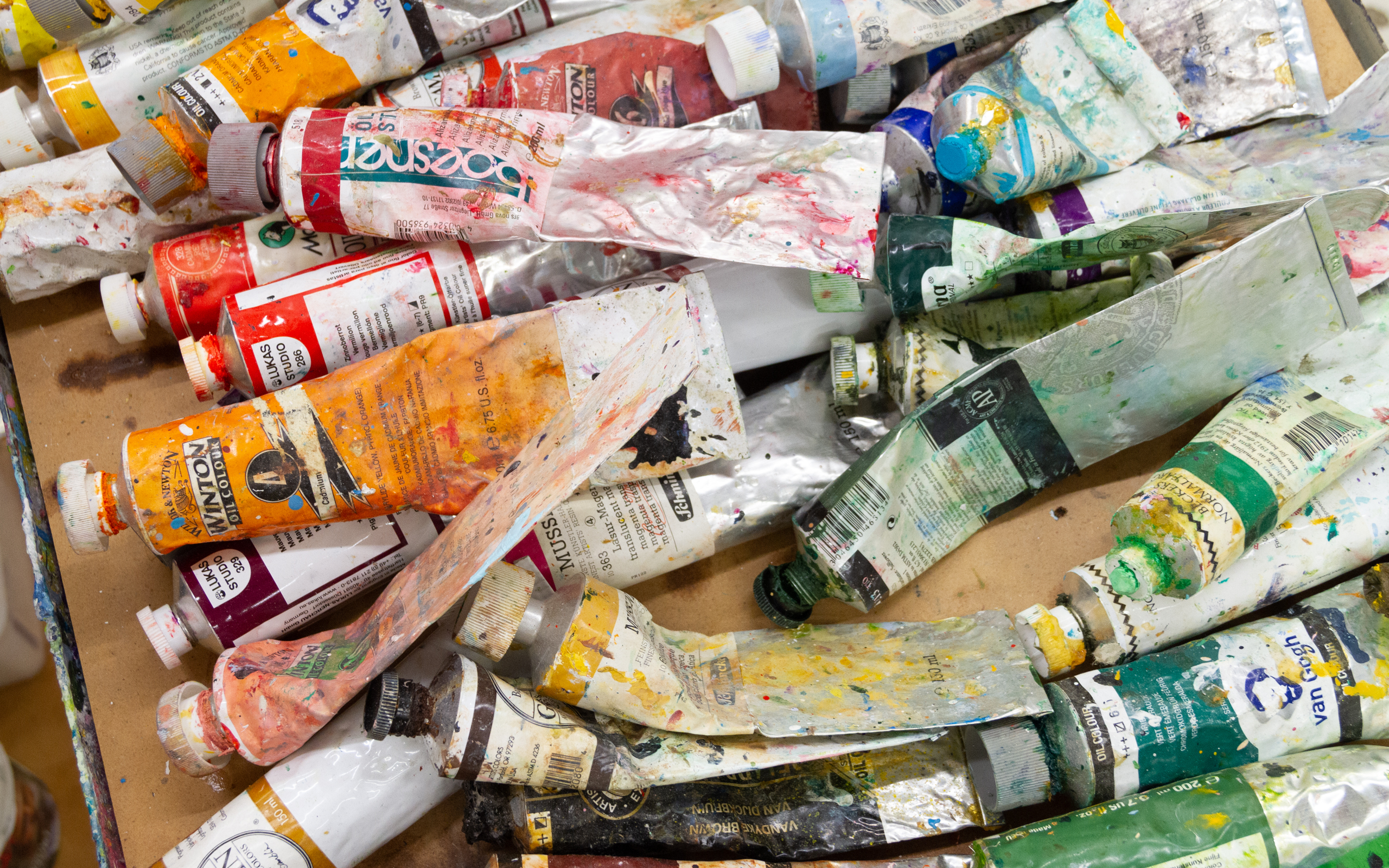
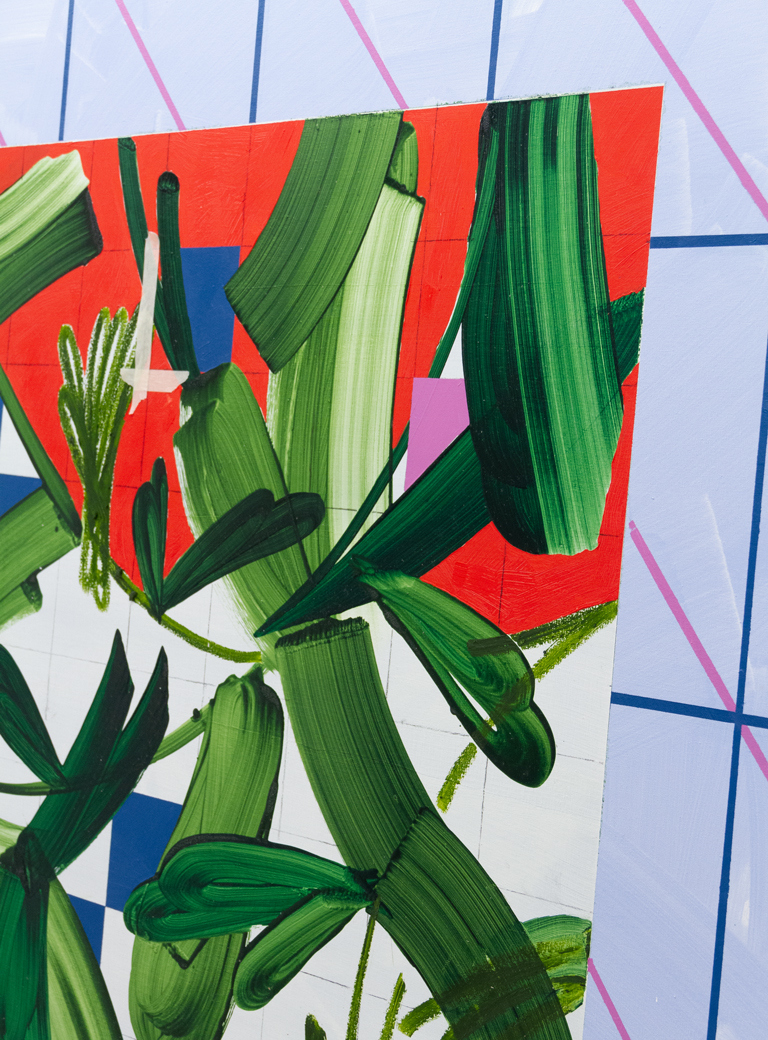
Earlier, you talked about the ‘perfect chaos’ of nature. How does it translate into what you’re doing?
The idea came from the challenge of making clear pictures out of complex structures. I’ve been painting this wild, messy jungle and then cutting it out and pasting it onto a solid background with some bright, synthetic colors and in this way make sense out of it. I like how both elements complement each other.
How would you describe where you are artistically at this moment and where you go from here?
The plan is to gather all the information and all the elements that I’ve been working on in the past years and rework ideas I didn’t touch upon before and make a final statement. The feeling that I have for the paintings is that they should crystallize what I’ve been saying with my works for the past three shows at least. So, in the upcoming paintings I’m still going to move between the abstract and the figurative ground. I will dig deeper into the organic and synthetic, the controlled and improvised worlds, using all key elements of my practice in large scale canvases.
Could you explain more about how an organized painter like you works?
Being a parent of two young daughters means that my working time is pretty subject to schedules. I usually work for 6 or 7 hours before I have to run to the kindergarten to pick up the kids! I have my daily routines at the studio. I begin the day by making small scale studies on paper, before moving onto the canvases. I want to give myself a lot of time to just look at the paintings. Each day I try to come one step further to keep the process going. I work in series, which means I make several paintings simultaneously. I don’t always know which I’ll work on or for how long before resuming work on another, but I like having a lot of material around me.
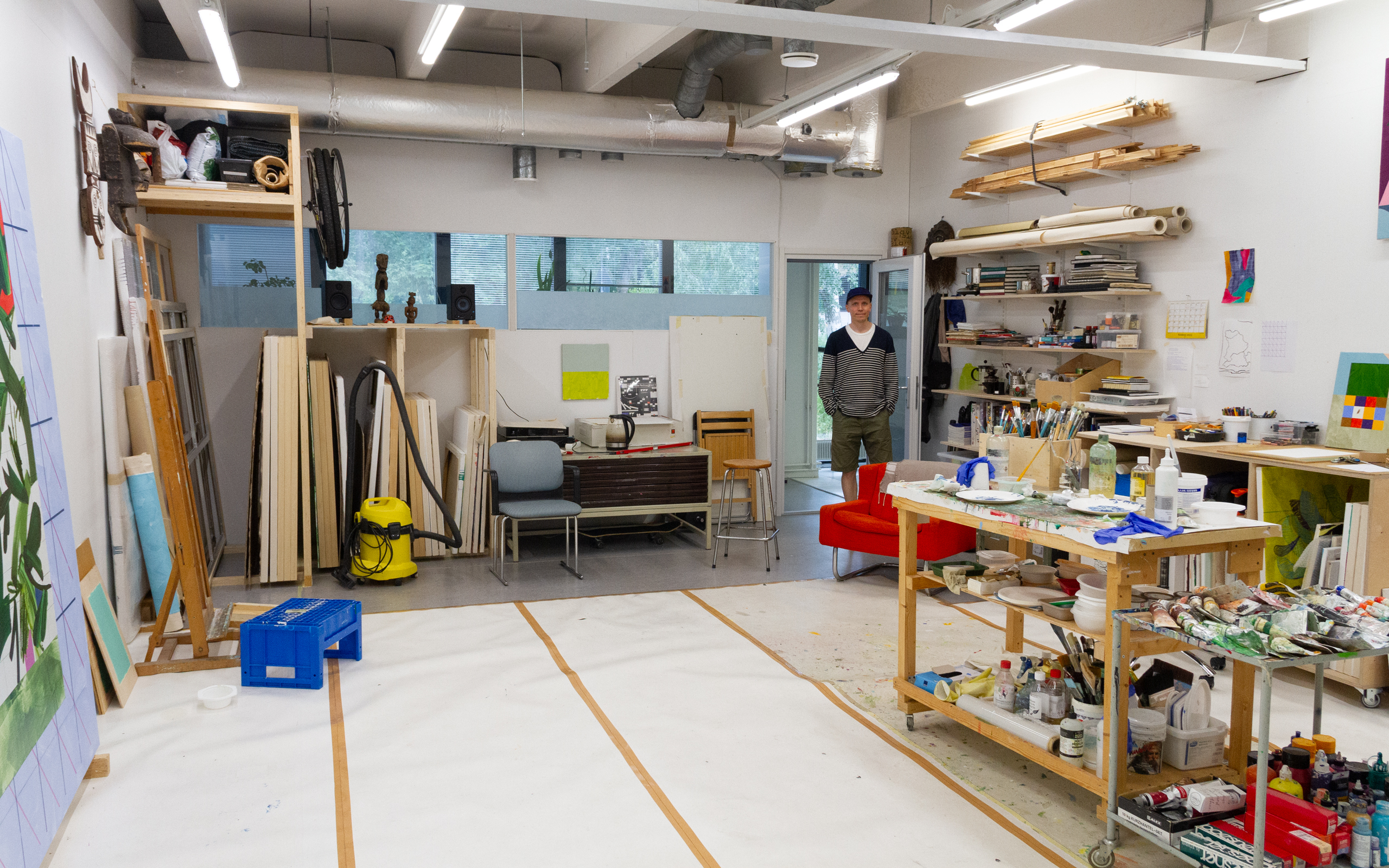
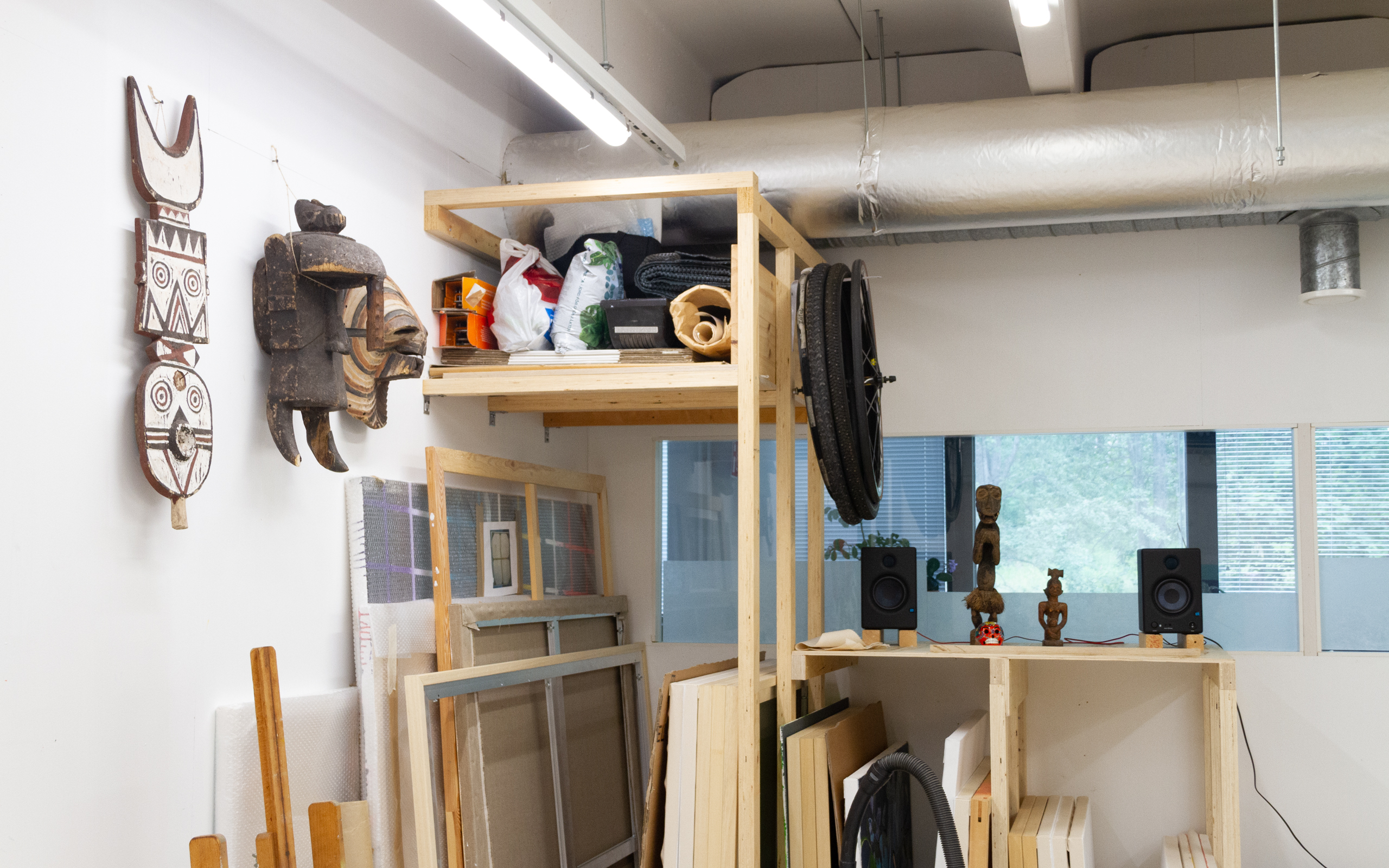
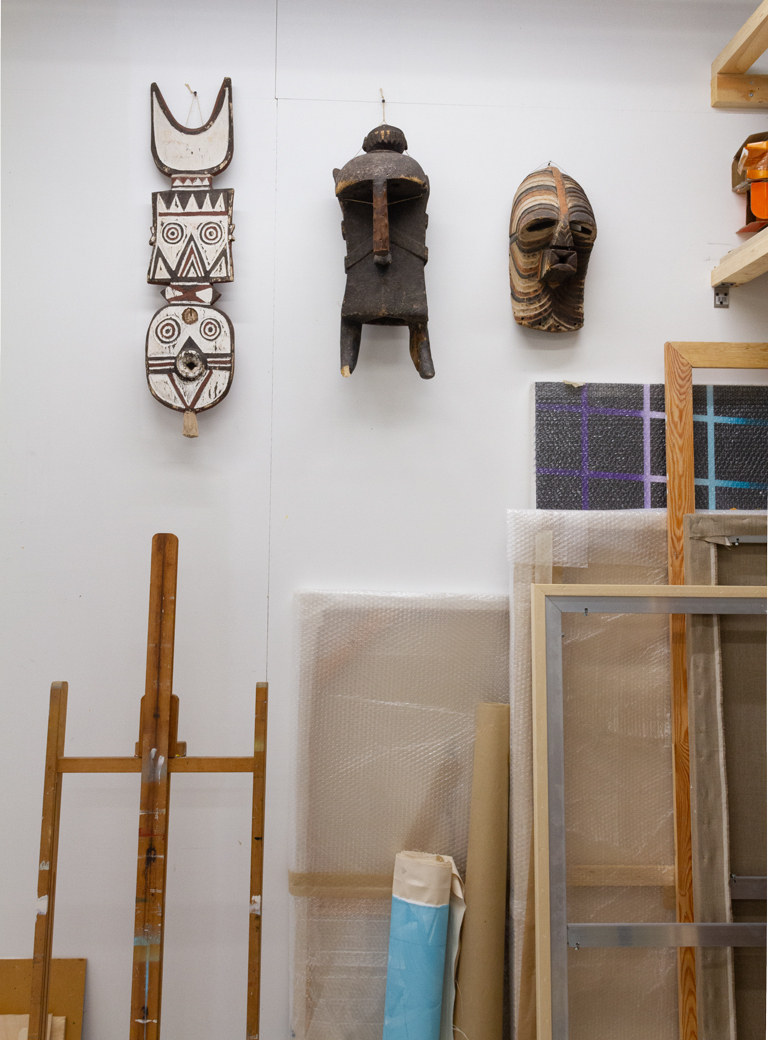
The greenery evokes a place afar, not typically Nordic nature. Where are we situated in your art?
It’s kind of my dream world; I’ve never been to a real jungle. It’s more like me improvising when I’m painting, and it just comes out naturally like this, raw and uncontrolled, where you can see each brush stroke.
Speaking of brush strokes, the plants have a certain vigor to them?
Yes, that’s the idea – the flow of my brush strokes and the way how different elements move around in my paintings reminds me of a melody. They are like symphonies. In my 2021 show Spirit I explored rhythm: the main theme was jazz music and how it affected my compositions and the improvisational part of painting.
The brush strokes are idiosyncratic to you. How would you explain their look and feel?
I like lettering and calligraphy a lot. I was paying a lot of attention to how I’m working with brushes and what kind of brushes I'm using and tried to imitate calligraphy. That’s where all the Xs, Ys, and Zs come from. I was also planning on making a series of script paintings with a calligraphy-styled plant-like font.
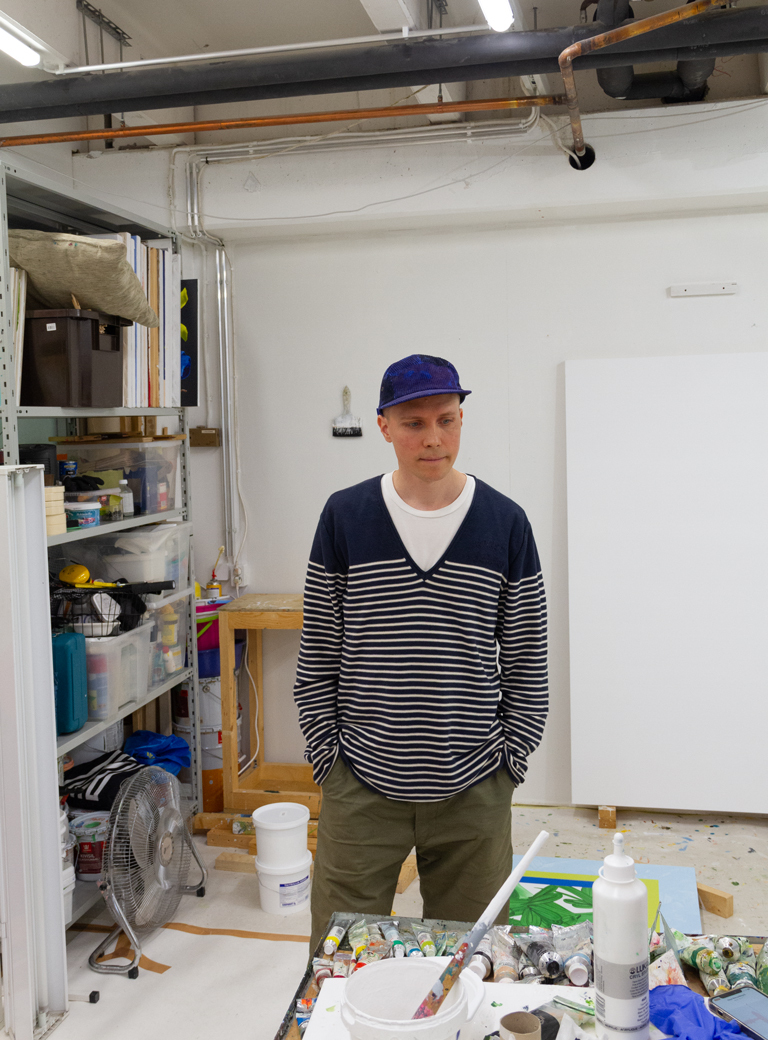
The foliage represents your memory of nature and has a calligraphic flair to it. In this synthesis, what does the foliage really become?
In my last show the flowers and the leaves evolved into something more than just being brushstrokes. They have been moving towards a more expressive quality. But I like to keep it between the abstract and the recognizable. It’s important for me to have some elements that are representative of something real, like leaves, plants and flowers. This is why I have been retaining them in a somewhat representative form. But it could go into something more abstract.
How do you stay so true to your expression that utilizes nature as the motif?
It’s been around for maybe too long, but I’m still fascinated by it. That’s the main thing. At the moment, I want to make the next paintings by bringing together all the main ideas the way I want them – just for my own sake. After that I’ll see which direction I’m going to take. I would like to get out of the jungle and do landscape paintings – ha ha!
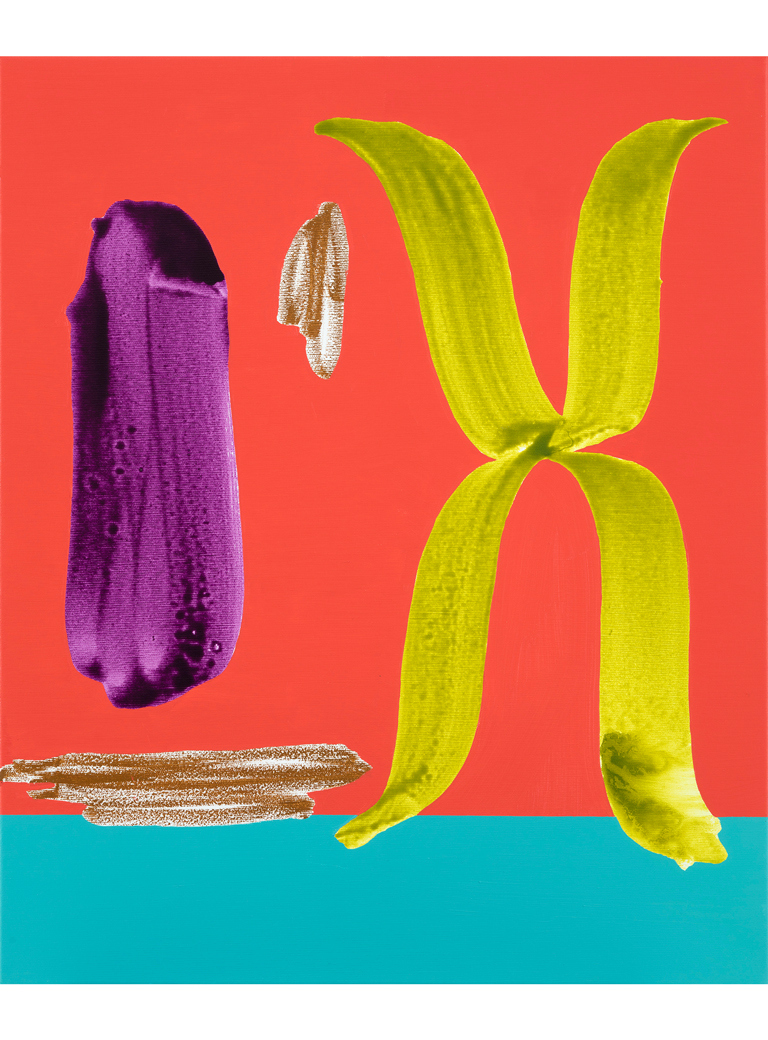
Sequences I, Acrylic and oil on canvas, 60x50cm, 2021, Photo: Jussi Tiainen
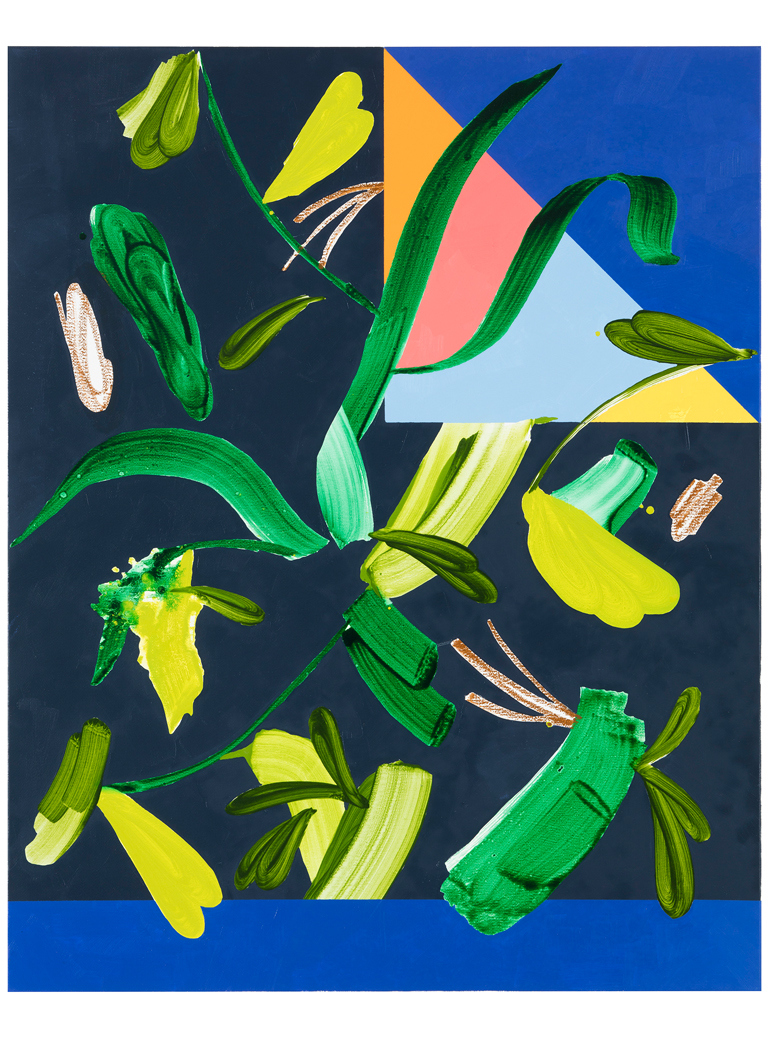
Flux (Ultra), Oil on canvas, 100x80cm, 2022, Photo: Jussi Tiainen
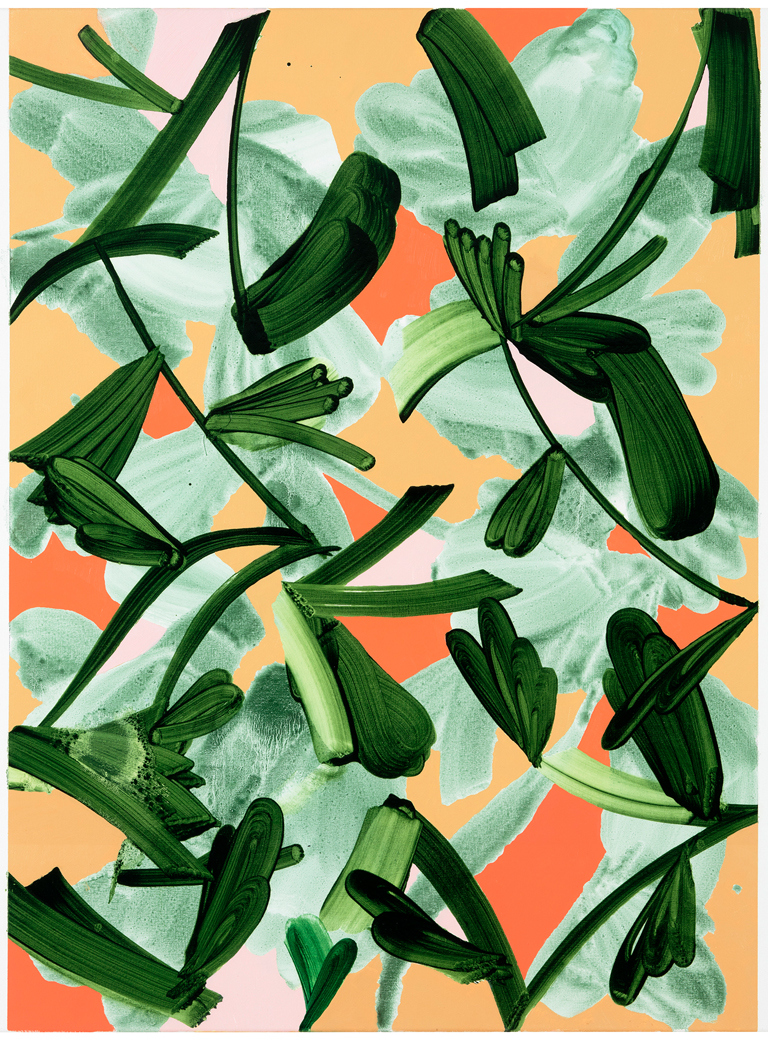
Flux (Freeform), Oil on canvas, 110x100cm, 2022, Photo: Jussi Tiainen
Interview: Rasmus Kyllönen
Photos: Florian Langhammer


